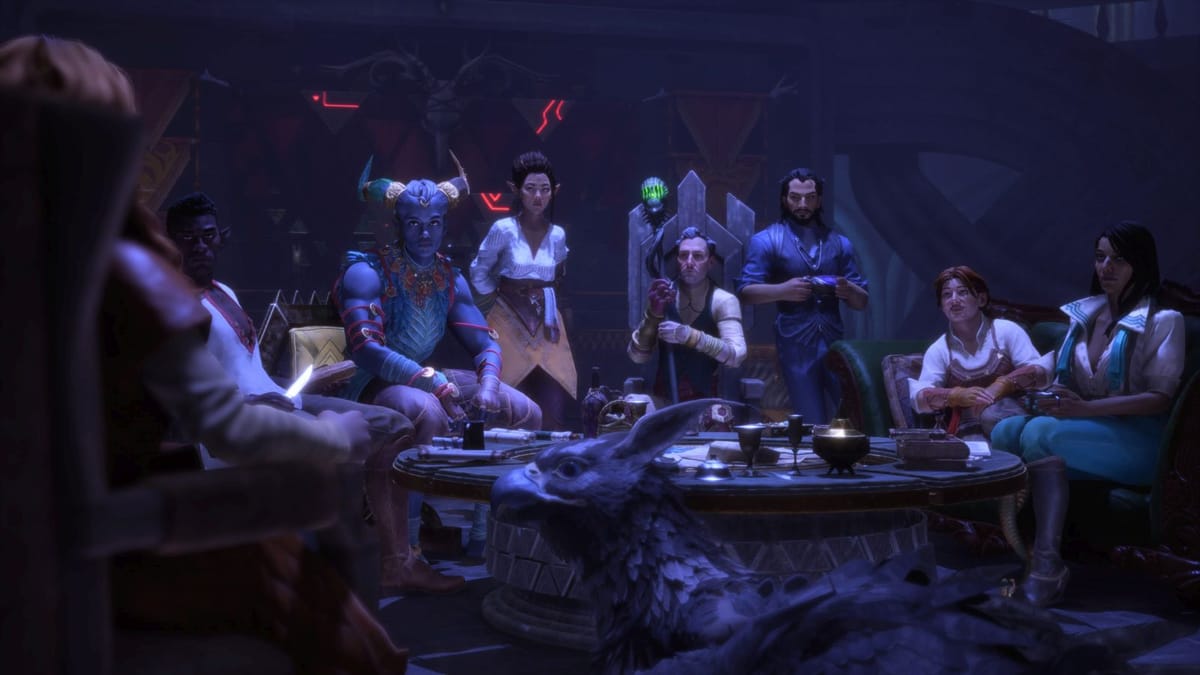
The Veil is the only thing standing between our world and a hoard of demons. Now one ancient elven god wants to tear it open. Solas, or the Dread Wolf, sealed the elven gods within the Fade millenia ago to stop their tyranny, but to restore the world to its former glory he’s willing to burn it all down. Rook, Varric, Harding, and Neve manage to stop him, but at a great cost. Two of the Evanuris got loose and are wreaking havoc across Thedas. With Varric injured, it’s up to Rook to put together a god slaying team, before it’s too late.
Dragon Age is finally back, after just under a decade since the last title, Dragon Age Inquisition, released. Well, mostly at least. Dragon Age: The Veilguard feels distinct from previous entries in a lot of ways. It’s not nearly as edgy or dark, it tries to distance itself from past player choices, and the combat is pure action this time around. But this is all in an effort to reestablish the franchise in the public consciousness. It may take a while to really get going, a long, long while, but once it does you’ll fall in love with Thedas and its characters all over again.
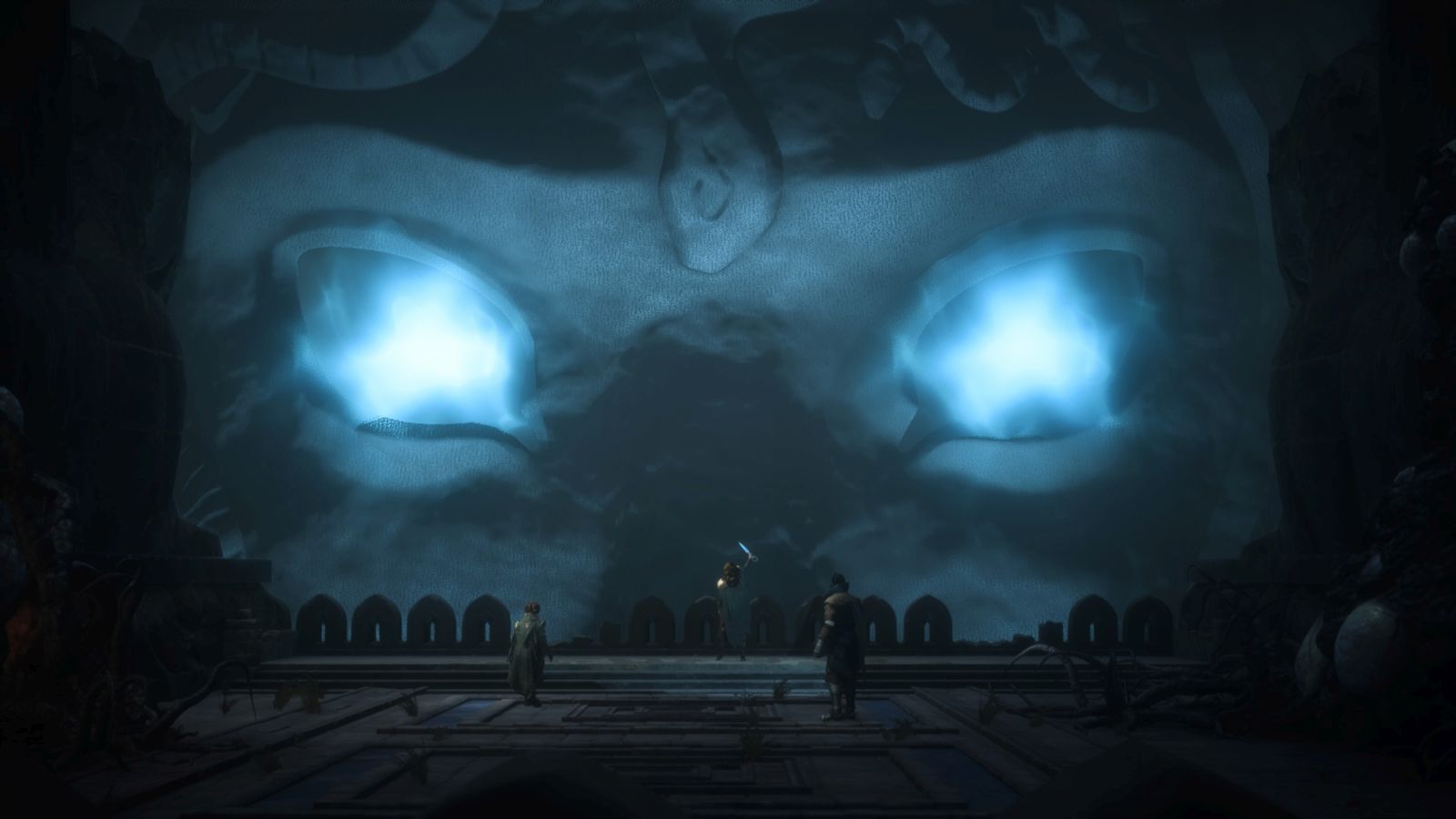
Once you’re done setting things up to your liking, it’s time to create your character. Character creation tools have evolved greatly since Origins, and Veilguard might be one of the best out there. You can choose to play as a Human, Dwarf, Qunari, or Elf, all with their own unique options on top of those common to each race. One of the first indications of just how versatile character creation is here is actually the skin tone selection. You have three different categories of colors, warm, neutral, and cold, which all have their own distinct colors within. On top of that, you have a Melanin slider at the bottom to further customize your choice. For face shape you choose three from a plethora of presets, find a happy medium between them, then edit further through sliders. There are so many options here, you can easily spend hours in here just tweaking things like body shape or tattoos to get them just right. There are also options to select whether your character is trans. This, along with a confirmation during an early game conversation, locks in that choice. Representation is important, and it’s not something you stumble into accidentally. Having a character that reflects your personal preferences for your 50+ hour journey means you’ll connect with that character more. If your preferences don’t head that direction, then you don’t have to interact with those elements at all. In short, it doesn’t affect you in any way, unless you consciously choose for it to do so, and if this makes you irrationally angry, please seek help to become a normal person.
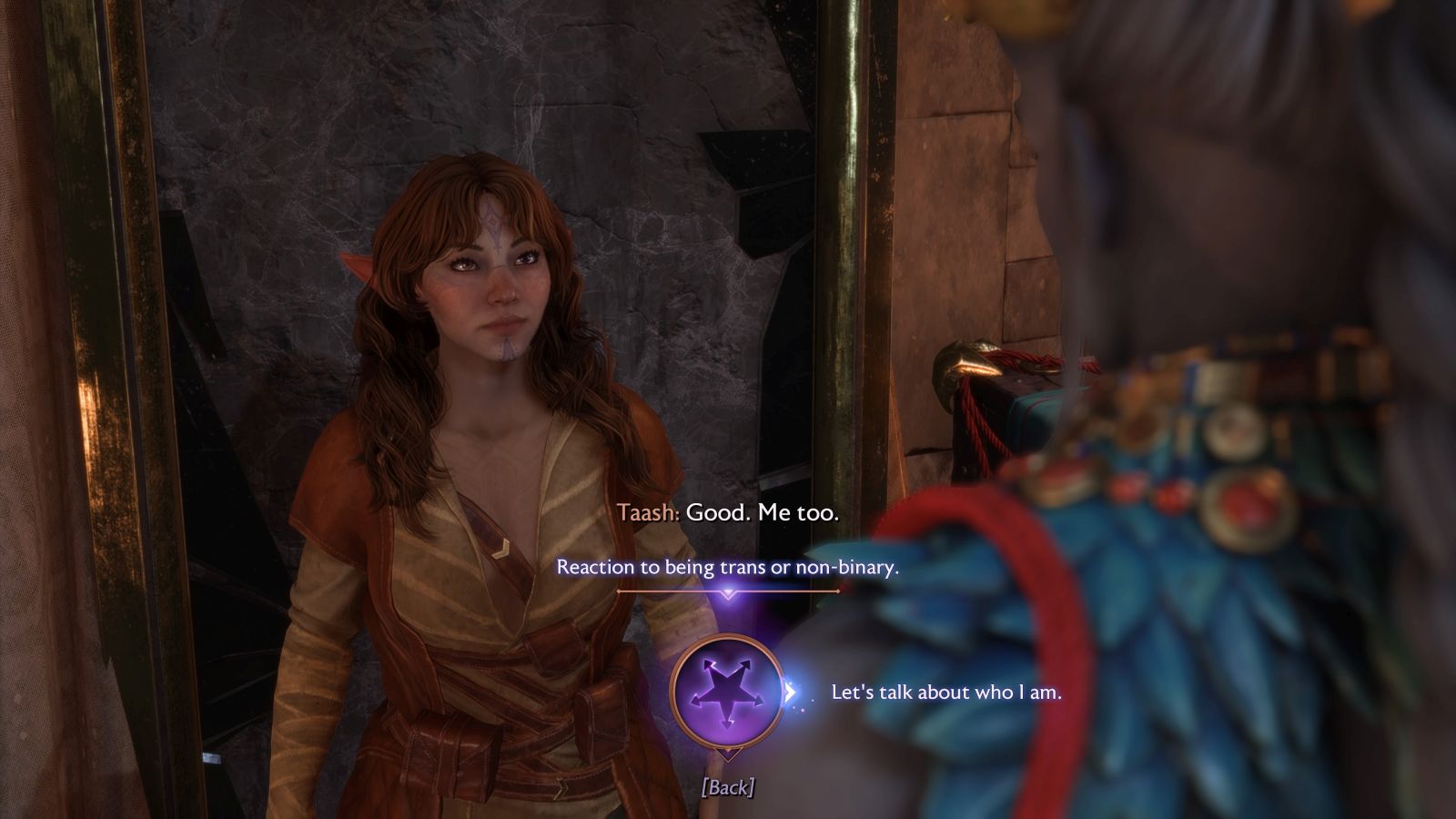
The three core classes of Dragon Age make a return here, each with three specializations you can unlock later on: Warrior, Rogue, and Mage. Any race can be any class, with the exception of Dwarves and Mages, since within the lore Dwarves don’t dream or have access to the Fade, the source of all magic. All of the classes have access to the same basic moves, like dodging, parries, and ranged attacks, but they do them in very different ways. With a shield, Warriors are more inclined to block and parry, while Rogues and Mages can dodge all over the place. Rogues use a bow and arrow for their ranged attacks, while Warriors throw their shield like Captain America, and Mages use force lighting. This, along with the skill tree, allows each class to feel distinct in combat and prevents subsequent playthroughs from feeling too similar.
That combat is easily the best part of Veilguard, something I never thought I would say about a Dragon Age game. While all three other games have featured classic CRPG pause combat in some form or another, Veilguard is purely action based. You press the west face button for light attacks, north for heavy attacks, east for dodging, and south for jumping. Equally as important is that they are distinct as well. So much so that there are separate, well-tuned, control schemes to make sure you’re maximizing your efficiency of movements for each of the three character types. Let’s dig into these a bit.
As always, you can be a mage, archer, or fighter in Dragon Age: The Veilguard. There is an expansive skill tree, regardless of which of these three classes, and you can’t level up anywhere near enough to capture them all, so choices will need to be made. Each of these contain dozens upon dozens of upgrade choices, branching in three categories that ultimately lead to a Level 20 Specialization. There is little risk to a try-before-you-buy approach as you can refund your points at will, so don’t agonize too much over your skills – they are flexible. You’ll also manage the skill trees for your companions, though their choices are far less in number than yours. What you’re trying to achieve is synergy between your team members, allowing them to combine their powers and skills in a way that is most devastating against the enemy.
Gone is the pause-and-play tactical overview menu where you’d place your crew precisely where you want them, and control specifically what skills they’ll unleash. This is replaced by a simplified system that instead focuses on synergistic combinations of your various powers and attacks. For example, Harding might sunder an enemy’s armor with a Primer skill, creating an opportunity for Bellara to detonate her Fade Bolts (a Detonator skill) on a foe for significant damage. Finding and exploiting these combination / trigger attacks can stagger or down a foe quickly. Thankfully the design language on the UI makes it very clear when you’ve got such an opportunity available to you, highlighting a skill on the wheel to draw your attention without being obnoxious. This is where your class choice makes a difference.
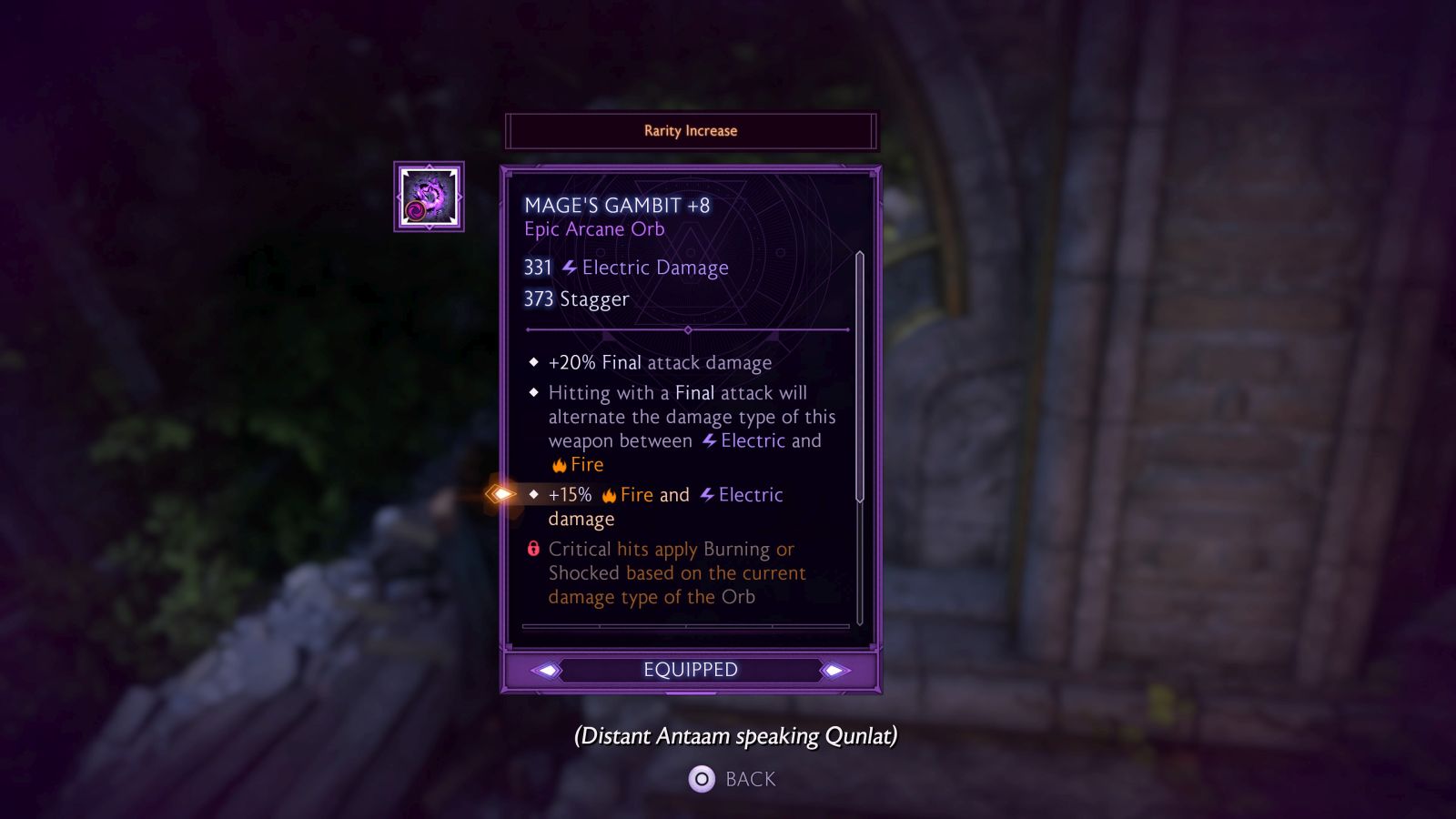
The three different classes are meant to engage at different ranges, though it’s more than possible for any of them to tackle foes point blank. Fighters are a sword-and-board variant, but through the skills you’ll unlock you’ll be whipping your shield into enemies, corkscrewing through the air, and looking like an epic combination of Valkyrie and Captain America from the MCU. Mages on the other hand wield incredible power from the mid-range, using their staff to rebuff foes with a magical arc (e.g. flames, necrosis, ice, etc.), or lobbing magical bolts to keep foes unbalanced. Archers are long range, able to destabilize foes from across the battlefield using arrows and magic. They couldn’t play more differently from one another – something that surprisingly diverges even further the longer you play. The best part is that there is no “bad” class, just ones that match your play style more than the others.
In the courtyard of the Lighthouse (a hub we’ll come back to in a bit) is an ally that can upgrade your equipment using the various bits and bobs you collect throughout the world. It’s the usual results, pushing numbers to higher values, but can also unlock their secondary characteristics. Upgrades at the Lighthouse improve the overall stats, but you’ll need to visit vendors in the world to unlock the other powers for that weapon or armor. Completing quests and selling equipment to these vendors upgrades the overall level of the vendor’s aligned group (e.g. Veil Jumpers, Shadow Dragons, etc.), creating more of a reason to engage with them. You’ll also unlock additional tiers of gear and upgrades, as well as cosmetic improvements, so you’ll be visiting these folks frequently.
By way of example, the upgrades work like this: A simple staff you pick up in the beginning of the game can suddenly generate an additional 15% Mana and, with a second unlock, generate Mana with every strike. Armor might add damage to foes that are already weakened, or add a secondary power like Precision, which …..I can’t click on to tell you what it means. Here’s where some UI help would be appreciated – a simple mouseover for the word could spare me having to exit the upgrade menu, head into the Library tab, navigating to the Glossary, selecting Combat, and then scrolling all the way down to Precision to learn that it means “The next Charged or Final attack on an enemy will be Critical”. And before you ask – it’s the same whether you’re using a controller or a mouse, only some terms have definitions you can bring up on a controller.
Back to the upgrades, you’ll be managing your equipment as well as that of your compatriots. Their weapons and armor require attention, though they only have four slots to manage versus your nine. You’ll find upgrades for their gear a lot less frequently, and most often in their side quests to raise that character’s “bond”, or loyalty. Since this bond is also how you level up, gaining points to put into their somewhat simplified skill tree (as well as unlocking an obfuscated one), you’ll want to take them out with you and get to know them.
We do need to talk about the voice work in Dragon Age: The Veilguard as it oscillates freely between fantastic and overwrought. To be clear, the voice work itself is magnificent, and it’s very easy to fall in love with any of these characters. No, it’s the directing and writing that tends to wobble. Sometimes it feels like you’re joining a conversation that’s en medias res, or one that has already concluded. During one sequence, your team directs you to go find the Lords of Fortune to recruit a Dragon Hunter. With a cutscene we’re “introduced” to a character with little more than “Hey” and then she’s immediately in our party and off we go. No trust building, no conversation, nothing. You finish the quest in this section and then all of the conversation that clearly already happened off screen unfolds. This happens often and it never stops being confusing.
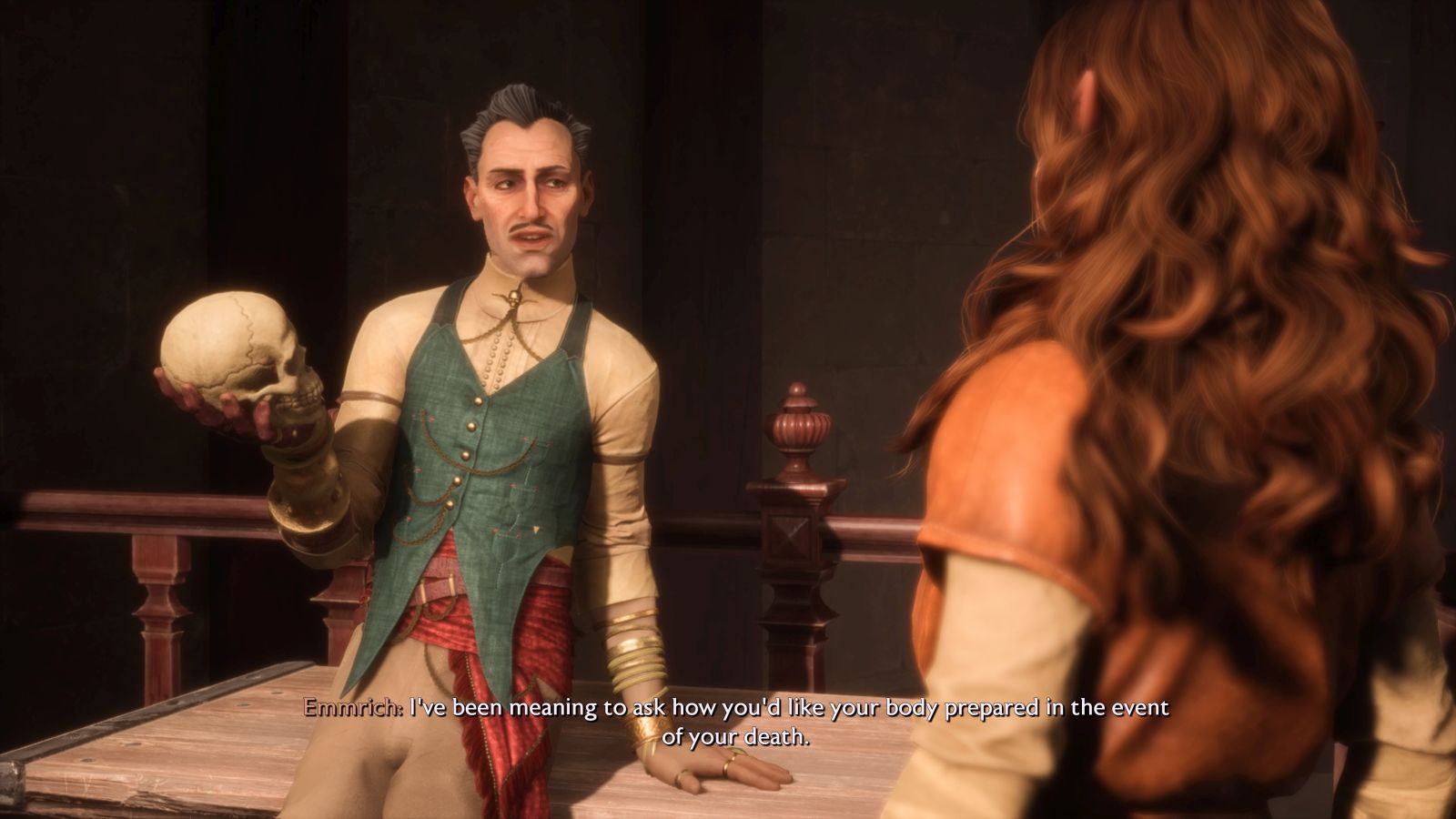
Speaking of the Qunari, let’s speak plainly – they’ve been a mess since the first game. They’ve been “just a big dude”, then the magnificent Arishok in the second game, a bit of a design pull-back with the still-excellent Iron Bull in Inquisition, and now the followers of the Qun are effectively humans with bigger foreheads. I can’t be sure, but it feels like this was a conscious design choice to make equipment interchangeable. This is exacerbated by the fact that you’ll be dealing with the grunty halting-language of the Antaam, then the slightly-less wobbly conversations with Taash’s mother, and then “indistinguishable from human” speaking tone of Taash herself. Frankly, I don’t care what lane they pick, but please pick one. If you have variants like Taash, have her comment about a strict educational upbringing around humans or something. Or just rewind back to the Arishok in look and language and enjoy the win.
I was surprised to see that you can lose access to quests. If you don’t take care of them in a timely fashion, taking on missions that move the “world” forward, you can lose that quest forever. Not paying attention, I pushed the story forward and was advised that a character “has no more time to spend on the beach with the bigger threats ahead of the team” – a big oops for any completionist.
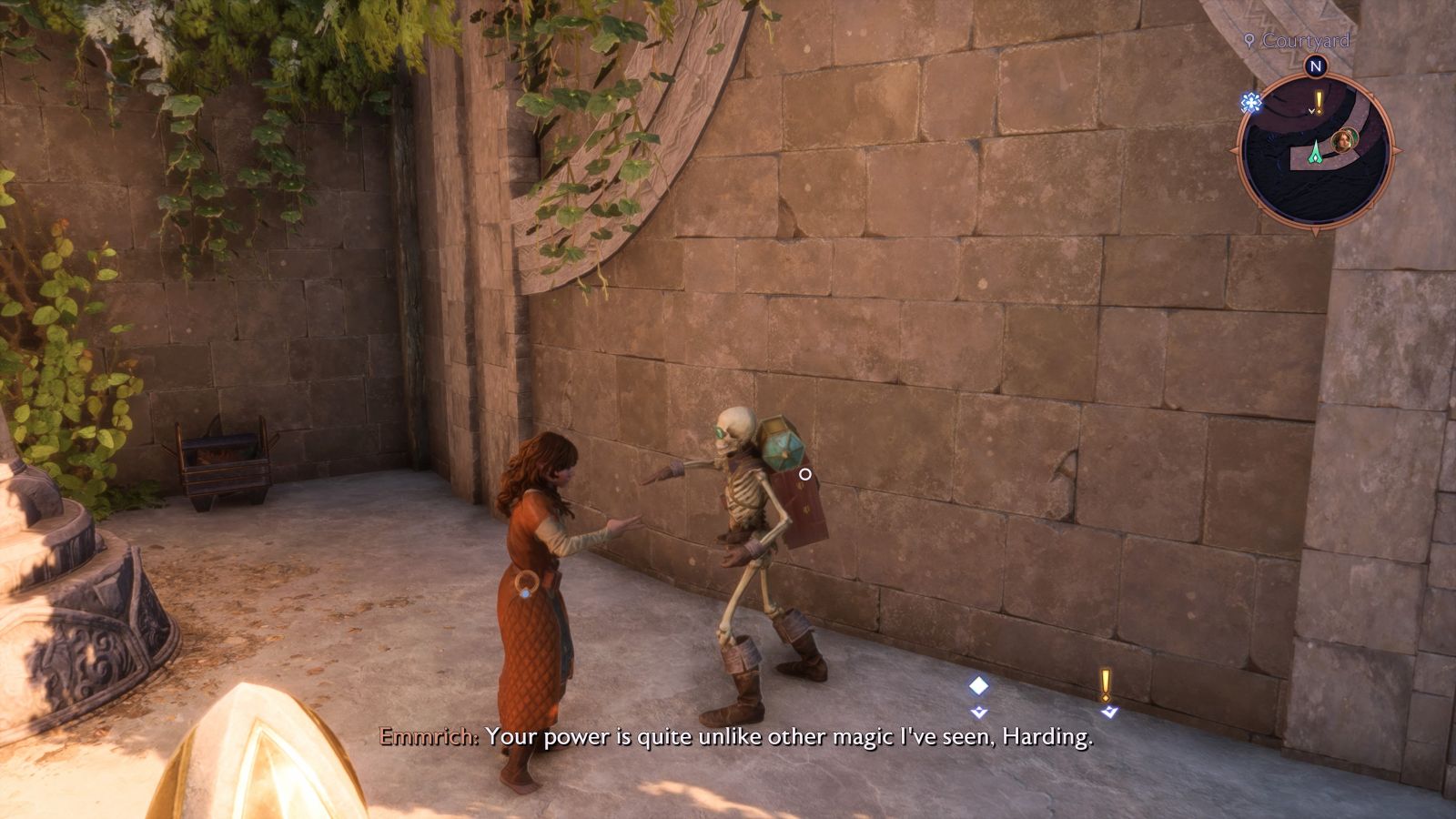
There is a central place where your team assembles – a seam in the fade called The Lighthouse. Here you’ll find a series of interconnected Eluvians (giant mirrors that allow instantaneous travel to the various locations in the game, as well as a sprawling space to explore on its own), as well as a space where your team can bed down. You can keep up with your teammates here, as well as perform upgrades and decorate it to your tastes. I was surprised at just how little this space is actually used. While it’s impressive to behold, the customizations are fairly sparse. Stuff you buy at shops or recover in the field can be propped on tables, you can swap out various statues, but none of it really connected for me – it’s just stuff.
From a technical standpoint, the game runs well on mid-tier PCs and PS5 as well. PS5 pulls a solid 60fps, albeit at 1080p in performance mode. Fidelity mode will up the resolution, but halve the framerate, which isn’t ideal for an action game. Bioware has said there will be enhancements for PS5 Pro, but we’ll have to see how those shake out at launch. On PC, there is a wide array of options for tweaking the game to hit whatever framerate puts a smile on your face. If you’ve got a 4000 series NVIDIA card you can use Frame Gen, which should double your framerate at the very least. RTX really brings the game to life, with gorgeous water effects, lighting, and reflections.
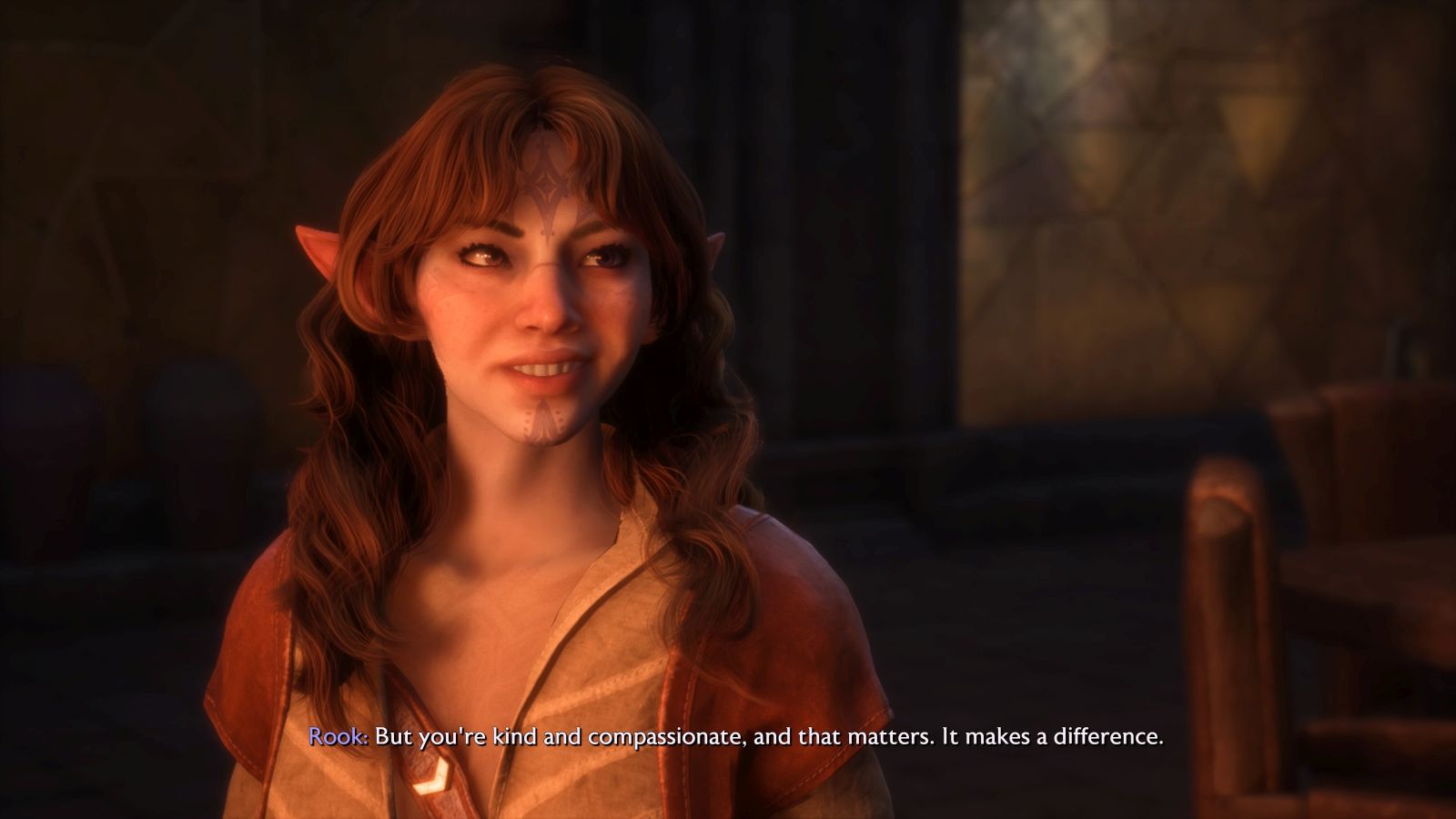
We need to circle back to the hair, because it is absolutely stunning. Give your character a longer hairstyle, and it will flow naturally as you run, in an almost mesmerizing way. Don’t worry about clipping either, because it’ll settle naturally on your character’s armor or clothing. All the hats kinda suck visually (especially the double hat, which looks painful for elves), but it’s a fair enough trade for hair physics and textures this gorgeous.
Playing Dragon Age: The Veilguard, it’s clear that whatever Bioware is now, they’re still getting their footing back. This is a messy game, but the more you play the more you grow to love it. It means well and, while it may stumble frequently, it’s clearly still got that Bioware spirit somewhere in there.
Dragon Age: The Veilguard
Great
The writing can be overwrought, written by committee, and occasionally forced, but it’s also a major step forward for a team that needs the win. Dragon Age: The Veilguard brings us compelling characters, excellent combat, and a world worth saving.
Pros
- A cast of characters you can care about
- New combat approach is fun and action-heavy
- Smooth 1080p/60fps for PS5
- Streamlined upgrade, equipment, and level up mechanics
- Conversations are occasionally abrupt or seemingly offscreen
Cons
- Writing is forced occasionally
- Change in combat might not be for everyone
- Some UI elements need a screw tightened
